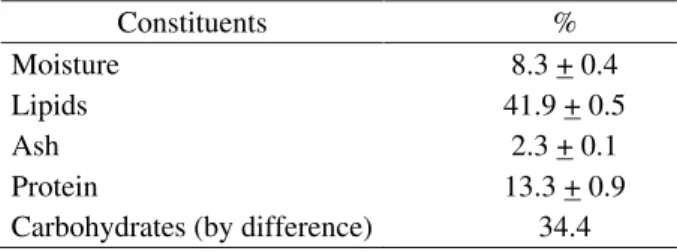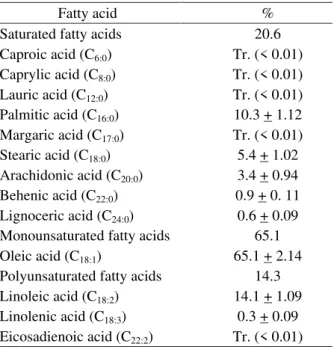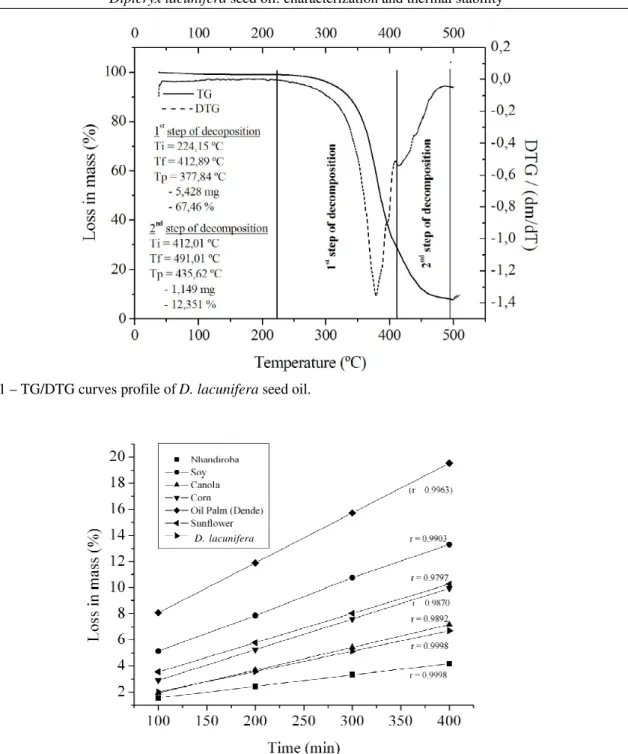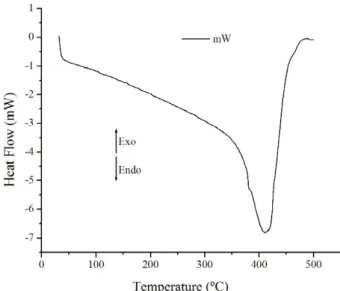1Farmacêutico, Doutor em Ciência e Tecnologia de Alimentos – Universidade Federal de Campina Grande – Centro de Saúde e Tecnologia Rural –
Unidade Acadêmica de Ciências Biológicas – Av. Universitária, S/N – Bairro Santa Cecília – Cx. P. 64 – 58.708-110 – Patos, Paraíba – vqneto@cstr.ufcg.edu.br
2Ciência de Alimentos, PhD em Ciência de Alimentos – Universidade Federal da Paraíba – Centro de Tecnologia Departamento de Tecnologia Química
e de Alimentos Campus I – 58.051-900 – João Pessoa, Paraíba – pradesh@uol.com.br
3Eng. Químico, Doutor em Ciência e Tecnologia de Alimentos – Universidade Federal do Piauí – Centro de Ciências Agrárias – Departamento de
Fitotecnia – Campus do Socopos – 64 049 350 – Teresina, Piauí – zeomar@ufpi.br
4Biólogo, Doutor em Ciência – Universidade Federal da Paraíba – Centro de Tecnologia Departamento de Tecnologia Química e de Alimentos – Campus I –
58.051-900 – João Pessoa, Paraíba – jmarcelin@uol.com.br
5
Farmacêutica, Mestranda no Programa de Pós-Graduação em Produtos Naturais e Sintéticos Bioativos – Universidade Federal da Paraíba – Laboratório de Tecnologia Farmacêutica – Campus I – 58.051-900 – João Pessoa, Paraíba – karinequeiroga@hotmail.com
Óleo de sementes de fava de morcego: caracterização e estabilidade térmica
Vicente Queiroga Neto1, Pushkar Singh Bora2, Zeomar Nitão Diniz3,
José Marcelino Oliveira Cavalheiro4, Karine Formiga Queiroga5
ABSTRACT
The Dipteryx lacunifera Ducke is an oleaginous legume with high oil and protein content that can be used in human nutrition.
The specie is a native of the Piauí and Maranhão state in the north east of Brazil. The measure physico-chemical properties of the oil are specific density, refractive index, acid, peroxide, iodine and saponification values of 0.91, 1.4651, 0.60 (% oleic acid), 2.81, 70.80 and about 179, respectively. Gas chromatographic analysis of the oil showed the presence of 20.6% saturated, 65.1% monounsaturated and 14.3% polyunsaturated fatty acids. The saturated fatty acids C6:0, C8:0, C12:0 and C17:0 were present in trace (<0.01%) amounts while the C16:0, C18:0, C20:0, C22:0 and C24:0 were at concentrations of 10.3, 5.4, 3.4, 0.9 and 0.6% of the total fatty acids. Unsaturated fatty acids C18:1, C18:2, C18:3 and C22:2 contents were 65.1, 14.1, 0.3% and trace (0.01%), respectively. Thermal analysis (TG/DTG) revealed that the thermal decomposition of the oil occurs in two steps corresponding to the unsaturated and saturated fatty acids. The oil, when heated to a temperature of 180º C for 400 min showed smaller loss in mass than commercial soy, sunflower and corn oils. The curve DSC indicated an endothermic event with enthalpy variation (DH) of -56.7 Cal.g-1 in the temperature interval of 340 ºC (Ti)
the 463o C (Tf), with maximum in 411.1º C (Tm).
Index terms: Dipteryx lacunifera; seed kernel oil; physical-chemical properties, fatty acids composition, thermogravimetric analysis.
RESUMO
A Dipteryx lacunifera Ducke (fava de morcego) é uma leguminosa oleaginosa com elevado conteúdo em proteínas e óleo
podendo ser usada na nutrição humana. A espécie é nativa dos estados do Piauí e Maranhão do nordeste do Brasil. Mensurações das propriedades físico-químicas do óleo densidade especifica, índice de refração, acidez, peróxidos, iodo e saponificação foram 0.91, 1.4651, 0.60 (% ácido oléico), 2.81, 70.80 e 179, respectivamente. A análise do óleo por cromatografia gasosa mostrou a presença de 20.6% de ácidos graxos saturados, 65.1% de monoinsaturados e 14.3% poliinsaturados. Os ácidos graxos C6:0, C8:0, C12:0 e C17:0 estão presentes em quantidades de traços (<0.01%) enquanto os C16:0, C18:0, C20:0, C22:0 e C24:0 estão em concentrações de 10.3, 5.4, 3.4, 0.9 e 0.6%, respectivamente, dos ácidos graxos totais. O conteúdo dos ácidos graxos insaturados C18:1, C18:2, C18:3 e C22:2 foram 65.1, 14.1, 0.3% e traço (0.01%), respectivamente. A análise térmica (TG/DTG) revelou que a decomposição térmica do óleo ocorre em dois estágios correspondentes aos ácidos graxos insaturados e saturados. O óleo quando aquecido na temperatura de 180º C por 400 min mostrou menor perda massa que o óleo comercial de soja, girassol e milho. A curva DSC indicou um evento endotérmico com variação de entalpia (DH) de –56.7 Cal.g-1 no intervalo de temperatura 340º C (Ti) a 463o C (Tf), com máximo em
411.1º C (Tm).
Termos para indexação: Dipteryx lacunifera; oleo da amêndoa da semente; propriedades físico-químicas; composição de ácidos
graxos; análises termogravimétricas.
(Received in december 29, 2007 and approved in october 17, 2008)
INTRODUCTION
The Dipteryx lacunifera plant is a native of the Northeast region of Brazil. The plant bears pods that contain the seeds. The seeds, locally known as “fava de morcego” are consumed as snacks in dried and salted form
auto-oxidation of oils followed by oxy-polymerization and thermo-oxidative decomposition. As oils and fats facilitate heat transfer during frying and other food processing operations, an evaluation of an oil/fat heat stability is of fundamental importance. Oxy-polymerization is an exothermic reaction that could be measured by thermal analysis such as thermogravimetry (TG), differential thermogravimetry (DTG), and differential scanning calorimetry (DSC) (Kowalski, 1991).
Such thermoanalytical methods are frequently used in the quality control of the vegetable oils as they provide quick information on their heat stability. Necessity of small oil samples, high precision and sensitivity of the method are other considerations compared with conventional methods (Ochocka et al., 1988; Wesolowski & Erecinska, 1998; Santos et al., 2004).
The EMBRAPA (EMPRESA BRASILEIRA DE PESQUISA AGROPECUÁRIA) – Piauí is working on the systematic plantation and genetic improvement of the specie – D. lacunifera. However, in spite of its potential as a rich source of fat and protein for human/animal nutrition, no attention has been directed towards evaluation the oil properties of its oil. A survey of the scientific literature demonstrates very little information on the lipid fraction of D. lacunifera seed kernel oil. is available except that of Mendes & Silveira (1994) who reported the chemical composition of the essential oil and chemical constituents of the fruit seed peel and Kernel oil. Therefore, the present work was undertaken to determine the physico-chemical properties, fatty acid composition and, thermal stability D. lacunifera seed kernel oil at elevated temperatures.
METHODS The Dipteryx lacunifera Seeds
The D. lacunifera seeds were removed from mature pods collected in october 2001 from the municipality of Bom Jesus de Gorguéia in Piauí state of Brazil. The beans were dried at 500 C for 24 hr in a forced air circulation dryer
and the pellicles removed by simple rubbing. The dried clean seeds were triturated in a domestic multi-processor (ARNO SA) at top speed and passed through the screen of 40 mesh sizes. The flour was immediately utilized for proximate analysis. For extraction of oil, the flour was packed in polyethylene bags and stored in a refrigerator. Proximate analysis of bean powder
Moisture, protein, lipid, ash, and crude fiber content were determined following standard AOAC (1995) methods. Total carbohydrate content was calculated by difference. Three different samples were analyzed in duplicate.
Extraction of oil
The oil was extracted from dried and triturated seeds with hexane in a soxhlet extraction apparatus for about 12 hr. After completion of extraction, the solvent was recovered. The residual solvent from the oil was removed in a boiling water bath. Triplicate sample prepared and packed in 250 mL amber colored bottles and stored in a refrigerator.
Physical and physicochemical properties
The refractive index and specific gravity of the oil were determined at 250 C. For determination of acid,
peroxide, iodine and saponification values, standard AOAC (1995) methods were used. The of oil sample were analyzed in triplicate.
Fatty acid composition
Fatty acids were converted to their methyl esters (FAME) following the method of Hartman & Lago (1973). Fatty acyl distribution in the oil gas chromatograph (HP 5890 Series II, Hewlett Packard) equipped with a flame ionization detector. 1.5 µl of the FAME sample was injected and the separation was carried out on HP-INNOwax capillary column (Hewlett Packard; 30m length, 0.25mm id. and 0.25mm film thickness). The carrier gas (helium) head pressure was maintained at 11.5 psi and the column flow rate was 1 mL.min-1. The oven temperature was held initially
at 120o C for 1 min, increased from 120o C at 8o C min-1 to 210o
C and then held at 210o C for 45 min. The temperature of the
injection port and of detector was 250o C and 280o C,
respectively. FAME were positively identified by matching their retention time with those of standards obtained from various firms (SIGMA; NU-CHEK-PREP, USA), which were also run under identical analytical conditions.
Thermal stability of oil
Thermal stability of the oil was evaluated from thermogravimetric obtained curves using a thermal-balance (SHIMADZU, MODEL TGA-50) with an air flux of 20 mL.min-1 under isothermal and non-isothermal conditions.
In the first case a 8.0 mg quantity of oil was sealed in an aluminum capsule and heated process at a constant temperature of 180o C for a period of 400 min while, in the
later case an equal quantity of oil was heated from a starting 30oC with a temperature gradient of 10o C min-1 till a final
temperature of 500o C. In both cases, loss in mass of the oil
of air with a flux of 50 mL.min-1, from initial 30o C at heating
rate of 10º C min-1 till 500º C. About 8 milligrams of oil
sample were subjected to heating. Statistical analysis
For the statistical analysis, the Statistical Analysis system (SAS) version 6.12 (SAS Institute, 1996) was used.
RESULTS AND DISCUSSION Proximate analysis of bean powder
Proximate analysis of D. lacunifera seeds is listed in table 1. Very little information on the lipid fraction of this specie is available in literature. Vieira Junior et al. (2007) reported the lipid content of 39.25 % (+ 2.0) as was also observed in our study. Vallilo et al. (1990) and Togashi & Sgarbieri (1994) have studied the seeds of Dipteryx alata Vogel, and found a lipid content of 41.6, 45.2 and 40.3%, respectively that is similar to that observed in this study. However, the previous authors reported 23.4, 26.3 and 29.6% protein content, respectively that is similar to that found in this studies, a value much higher than the protein content (13.3%) of the seeds of D. lacunifera in present study.
Table 1 – Proximate composition (%) of dried D. lacunifera seed powder.
Constituents %
Moisture 8.3 + 0.4
Lipids 41.9 + 0.5
Ash 2.3 + 0.1
Protein 13.3 + 0.9
Carbohydrates (by difference) 34.4 The result shows the media and standard deviation of the analysis of three lots of dried and powdered seed kernels.
Physical and physicochemical properties
Table 2 lists the physico-chemical properties of D. lacunifera seed oil. The saponification value (SV) was about 179, similar to the values reported by Vallilo et al. (1990) and Togashi & Scarbieri (1994) 180.6 and 190 respectively for the seed oil of the another specie Dipteryx alata (BARU), of the same family. The iodine value (IV) was 113.4 higher than the IV from Dipteryx alata seed kernel oil (84.0 and 91.6) reported by the same authors. The acid and peroxide values represent the quality of the oil. The acid value of the oil was 0.6%, slightly higher than the acid value recommended by Codex Alimentarius
Comission Report (1993) for edible oils. However, in spite of the fact that crude oil was analyzed in the present study, the peroxide value was 2.8 meq.kg-1, well below the limit of
10.0 meq.kg-1oil established by Codex Alimentarius
Comission Report (1993). Fatty acid composition
The fatty acids composition of the seed kernel oil is listed in Table 3. Fatty acids from 6 to 24 carbon atoms containing up to three double bonds were detected. Saturated fatty acids with even number of carbon atoms C6:0, C8:0, C12:0 and, a unsaturated fatty acid C22:2 were present in trace quantities. One odd carbon number of fatty acid (C17:0) also was identified in trace quantity. The saturated fatty acids represented 20.6% of the total fatty acids, with C16:0 (10.3%) and C18:0 (5.4%) being predominant. Other saturated fatty acids such as C20:0 (3.4%), C22:0 (0.9%) and C24:0 (0.6%) also were identified. Vieira Junior et al. (2007) reported saturaded fatty acids content of 22.4 %, constituted by 14.34 % of C16:0, 4.55% of C18:0 and 3.51% of C24:0. Unsaturated fatty acids represented 79.4%, of the total fatty acids. Oleic (64.1%) and linoleic acids (14.1%) together contributed to about 99.7% of the total unsaturated fatty acids. The monounsaturated fatty acid concentration is higher than that reported for canola (61.5%) and olive (61.9%) (Bruzzetti, 1999). Its polyunsaturated fatty acid level (14.4%), however, was lower compared a this species. Linolenic acid (C18:3) also was present at a concentration of 0.3%. Vieira Junior et al. (2007) reported 77.58 % unsaturated fatty acids. The unsaturated fatty acids C18:1 (75.82 %) and C18:2 (1.76 %) were at higher and lower concentrations, respectively when compared to the results of our study.
Table 2 – Physicochemical properties of (Dipteryx lacunifera) seed kernel oil.
Physico-chemical Property Value Specific density 250 C 0.9100 ± 0.0012
Refractive index 250 C 1.4651 ± 0.003
Acid value (oleic acid %) 0.6 ± 0.01 Saponification value
(mg KOH.g-1 oil) 178.9 ± 1.01
Iodine value (g of I2.100-1 g oil) 113.4 ± 0.22
Peroxide value (meq.kg-1oil) 2.8 ± 0.17 The results show the average value and standard deviation of the analysis of three oil samples.
Table 3 – Fatty acid composition of D. lacunifera seed kernel oil.
Fatty acid %
Saturated fatty acids 20.6
Caproic acid (C6:0) Tr. (< 0.01)
Caprylic acid (C8:0) Tr. (< 0.01)
Lauric acid (C12:0) Tr. (< 0.01)
Palmitic acid (C16:0) 10.3 + 1.12
Margaric acid (C17:0) Tr. (< 0.01)
Stearic acid (C18:0) 5.4 + 1.02
Arachidonic acid (C20:0) 3.4 + 0.94
Behenic acid (C22:0) 0.9 + 0. 11
Lignoceric acid (C24:0) 0.6 + 0.09
Monounsaturated fatty acids 65.1
Oleic acid (C18:1) 65.1 + 2.14
Polyunsaturated fatty acids 14.3 Linoleic acid (C18:2) 14.1 + 1.09
Linolenic acid (C18:3) 0.3 + 0.09
Eicosadienoic acid (C22:2) Tr. (< 0.01)
The results show the average value and standard deviation of the analysis of three oil samples.
Thermal analysis of oil
The thermogravimetric/differential thermogravimetric (TG/DTG) profile of D. lacunifera seed oil (Figure 1) show its thermal behavior under dynamic conditions. It was observed that the TG curve shows thermal stability of the oil up to a temperature of 224.2º C (Ti). Decomposition and carbonization follow the same curve, represented by a single step at a temperature of 491.3ºC (Tf). The temperature at which the process of thermal decomposition is completed represented a loss of 91.3% in mass. From the TG curve it
is not possible to observe the increase in mass of the sample as a result of at double bond oxidation. This suggests that within the experimental conditions, thermal decomposition did not involve oxidation of the unsaturated fatty acids in the oil. From the DTG curve (Figure 1) it could be noted more explicitly that of thermal decomposition of the oil occurred in two steps. In the first step the temperature range was 224.2 to 412.9ºC. The loss of mass was 67.5% of the initial, being greater superior than olive (53.3%), canola (58.7%), sunflower (49.7%), soy (51.3%) and rice (53.2%) oils as reported by Santos et al. (2002). Weast (1973) and Buzás et al. (1988), citings for Santos et al. (2002) explains that the temperature range corresponding to the first step could be attributed to thermal decomposition of the polyunsaturated fatty acids. The second step of thermal decomposition occurred at a temperature range of 412.0 to 491.0º C. The loss in mass at this step was correspond 23.9% the initial mass, greater to other oils reported by Santos et al. (2002), which varies from 9.7% for olive to 14.7% for sunflower oil. This step correspond to the decomposition of the saturated fatty acids and other substances formed during polymerization of the degradation products of the fatty acids in the earlier step.
Smaller value of Ti for Fevillea trilobata L.
(NHANDIROBA) (208.49ºC) and palm kernel (160.7ºC) oil was reported by Ventura (2001). Higher Ti values for the commercial soy (325.8ºC), canola (305.7ºC), corn (249.3ºC) and sunflower (288.8ºC) oil was also reported by the same author. The final temperatures for the thermal decomposition of these oils varied from 496 a 499 ºC, similar to decomposition temperature observed in this study. The loss in mass for soy, canola and sunflower oil was 98.5% while for corn and palm kernel oil the loss was 93.9 e 99.6%, respectively. The Ti values for olive (220.6º C), canola (220.1º C), sunflower (218.8º C), soy (220.8º C) and rice (233.2º C) oil was reported by Santos et al. (2002).
Using the data reported by Ventura (2001) of the loss in mass of the commercial oils as well as of D. lacunifera seed oil in our study, Figure 2 was constructed. The total loss in mass of D. lacunifera seed oil in two steps of decomposition was 6.7% being smaller than soy (13.1%), canola (6.9%), sunflower (9.9%), corn (9.5%) and palm kernel (19.4%) oil. It can be observed from Figure 2 that (a) all oils, independent of origin or fatty acid composition presented the same model for thermal stability in which the loss in mass is linearly proportional to the time of heating at 180ºC. The model not take into consideration the type or proportion of saturated and unsaturated fatty acids present in each oil. (b) the slope of the curve denotes the decomposition rate. The smaller is the slope of the curve, lower will be the rate of the decomposition of the oil, as for example, nhandiroba oil. The D. lacunifera oil showed more similarity with canola and sunflower oil.
Figure 1 – TG/DTG curves profile of D. lacunifera seed oil.
Figure 2 – Thermogravimetric curves profile of D. lacunifera seed oil along with some commercial oils (Ventura, 2001) maintained at 180º C for about 400 min.
D. lacunifera
According to Fennema (1993) and Paul & Mital (1997), the thermal stability of an oil destined for frying process depend upon its initial acid and peroxide values. Gennaro et al. (1998) reported that the thermal stability of the oil is dependent of the proportion of saturated and unsaturated fatty acids in the triglycerides. Other
components that makes their way to the oil during the extraction process.
Differential Scanning Colorimetry
The DSC curve for the D. lacunifera seed oil is shown in Figure3. The energy endothermic transition was initiated at 340° C (Ti) and terminated at 485o C (Tf) with a variation in enthalpy of -56.7 Cal.g-1 and maximum
transition at a temperature (Tm) of 411.1o C. The endothermic transition in the oil correspond to the thermal decomposition of the saturated and unsaturated fatty acids (Nassu, 1994) while, exothermic transition is attributed to the process of auto-oxidation. The values of the enthalpy are negative because the oil is receiving heat for its decomposition. In any case, the bigger the size of the hydrocarbon chain, the higher the enthalpy of transition is. The presence of antioxidants in the oil also influences its transition energy through the induction of enthalpy (Simon et al., 2000). These authors observed that the enthalpy of oils containing antioxidants require higher enthalpy of decomposition than the oils that do not contain antioxidants. Kasprzycka-Guttman & Coziniak (1995) reported that the thermal decomposition of saturated fatty acids requires more energy than the unsaturated fatty acids. The H for this transition is sufficiently high (-56.7 Cal g1), suggesting that the oil possesses better resistance
to oxidation and thermal decomposition that of soy (-19.0 Cal g1), corn (-11.6 Cal g1), sunflower (-21.6 Cal g1), rice
(-51.1 Cal g1), canola (-35.3 Cal g1) and olive (-46.4 Cal g1) oil
(Santos et al., 2002).
Figure 3 – DSC curves profile of D. lacunifera seed oil.
CONCLUSION
The centesimal composition characterized the kernel as a typical oleaginous. The oil presented physiochemical properties characterized by the legislation and related with its chemical composition in fat acids, supposing high resistance to the oxidative degradation. However, his nutritional quality, comparatively with commercial oils is committed by the indexes, relatively low, of essential fat acids.
REFERENCES
ASSOCIATION OF OFFICIAL ANALYTICAL CHEMISTS. Official methods of analysis. 15.ed. Washington, 1995. 426p.
BALOGUN, A.M.; FETUGA, B.L. Fatty and composition of seed oils of some members of the Leguminosae family. Food Chemistry, Saint Louis, v.17, p.175-182, 1985. BRUZZETTI, A.R. Cresce produção de girassol. Óleos & Grãos, São Bernardo do Campo, v.46, p.34-38, 1999. CALDER, P.C. The effects of fatty acids on lymphocyte functions. Brazilian Journal Medicine Biology Residence, Ribeirão Preto, v.26, p.901-917, 1993. CODEX ALIMENTARIUS COMMISSION REPORT. Report of the 14 th session of the codex committe on fols and oils. London: Alinun, 1993.
FENNEMA, O.R. Lipídios. In: ______. Chimica de los alimentos. Zaragoza: Acribia, 1993. p.221-231.
GENNARO, L.; BOCCA, A.P.; MODESTI, D.;
MASELLA, R.; CONI, E. Effect of biophenols on olive oil stability evaluated by thermogravimetric analysis. Journal of Agricultural and Food Chemistry, Columbus, v.46, p.4465-4469, 1998.
HARTMAN, L.; LAGO, R.C.A. Rapid preparation of fatty acid methyl esters from lipids. Laboratory Practice, Switzerland, v.22, p.1217-1221, 1973.
KASPRZYCHA-GUTTMAN, T.; COZENIAK, D. Specific heat of some pharmaceutical oils and fats measured by differential scanning calorimetry at 70 – 140o C.
MENDES, F.N.P.; SILVEIRA, E.R. Fatty acids, sesqui and diterpenoids from seeds of dipteryx lacunnifera.
Phytochemistry, London, v.35, n.6, p.1499-1503, 1994. NASSU, R.T. Estudo do comportamento térmico de óleos e gorduras por calorimetria de varredura diferencial (DSC). 1994. 84f. Dissertação (Mestrado em Ciência de Alimentos)-Universidade Estadual de Campinas, Campinas, 1994.
OCHOCKA, R.J.; WESOLOWSKI, M.; LAMPARCZYK, H. Thermoanalysis supported by principal component analysis of essential oil sample. Thermochimica Acta, Saint Louis, v.173, p.199-210, 1988.
PAUL, S.; MITTAL, G.S. Regulating the use of degraded oil/fat in dep-fat oil food frying. Critical Review in Food Science and Nutrition, Saint Louis, v.37, p.635-662, 1997. SANTOS, J.C.O.; SANTOS, I.M.G.; CONCEIÇÃO, M.M.; PORTO, S.L.; TRINIDADE, M.F.S.; SOUZA, A.G.; PRASAD, S.; FERNANDES JUNIOR, V.J.; ARAÚJO, A.S. Thermoanalytical, kinetic and rheological parameters of commercial edible vegetable oils. Journal Thermal Analysis and Calorimetry, v.75, p.419-428, 2004. SANTOS, J.C.O.; SOUZA, A.G.; PRASAD, S.; SANTOS, I.M.G.; SANTOS, I.V. Thermal stability and kinetic parameters of thermal decomposition of commercial edible oils by thermogravimetry. Journal of Food Science, Chicago, v.67, n.4, p.1363-1369, 2002.
SAS INSTITUTE. Users guide to statistics.Verson 6.12. Carry: North Carolina State University, 1996. 956p.
SIMON, P.; KOLMAN, L.; NIKLOVA, I.; SCHMIDT, S. Analysis of the induction period of oxidation of edible oils by Differential Scanning Calorimetry. Journal of the American Oil Chemists’ Society, Chicago, v.77, p.639-642, 2000.
TOGASHI, M.; SGARBIERI, V.C. Proximate chemical characterization of the baru (Dipteryx alata Vog) fruit. Ciência e Tecnologia de Alimentos, Campinas, v.14, p.85-95, 1994.
VALLILO, M.I.; TAVARES, M.; AUED, S. Composição química da polpa e da semente do fruto de camburu (Dipteryx alata Vog): caracterização do óleo da semente. Revista do Instituto Florestal, São Paulo, v.2, p.115-125, 1990.
VENTURA, A.P.M. Avaliação físico-química,
toxicológica e da estabilidade térmica do óleo vegetal de nhandiroba (Fevillea trilobata). 2001. 121f. Dissertação (Mestrado em Ciência e Tecnologia de Alimentos)-Universidade Federal da Paraíba, João Pessoa, 2001. VIEIRA JÚNIOR, G.M.; SILVA, H.R.; BITTENCOURT, T.C.; CHAVES, M.H.; SIMONE, C.A. Terpenos e ácidos graxos de Dipteryx lacunifera Ducke. Química Nova, São Paulo, v.30, n.7, p.1658-1662, 2007.
VOSS, A. Ácidos graxos Omega-3. Atualidades Dietéticas, São Paulo, v.1, p.1-5, 1994.



